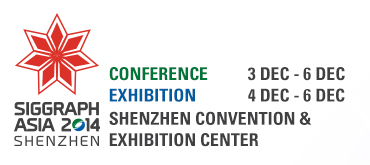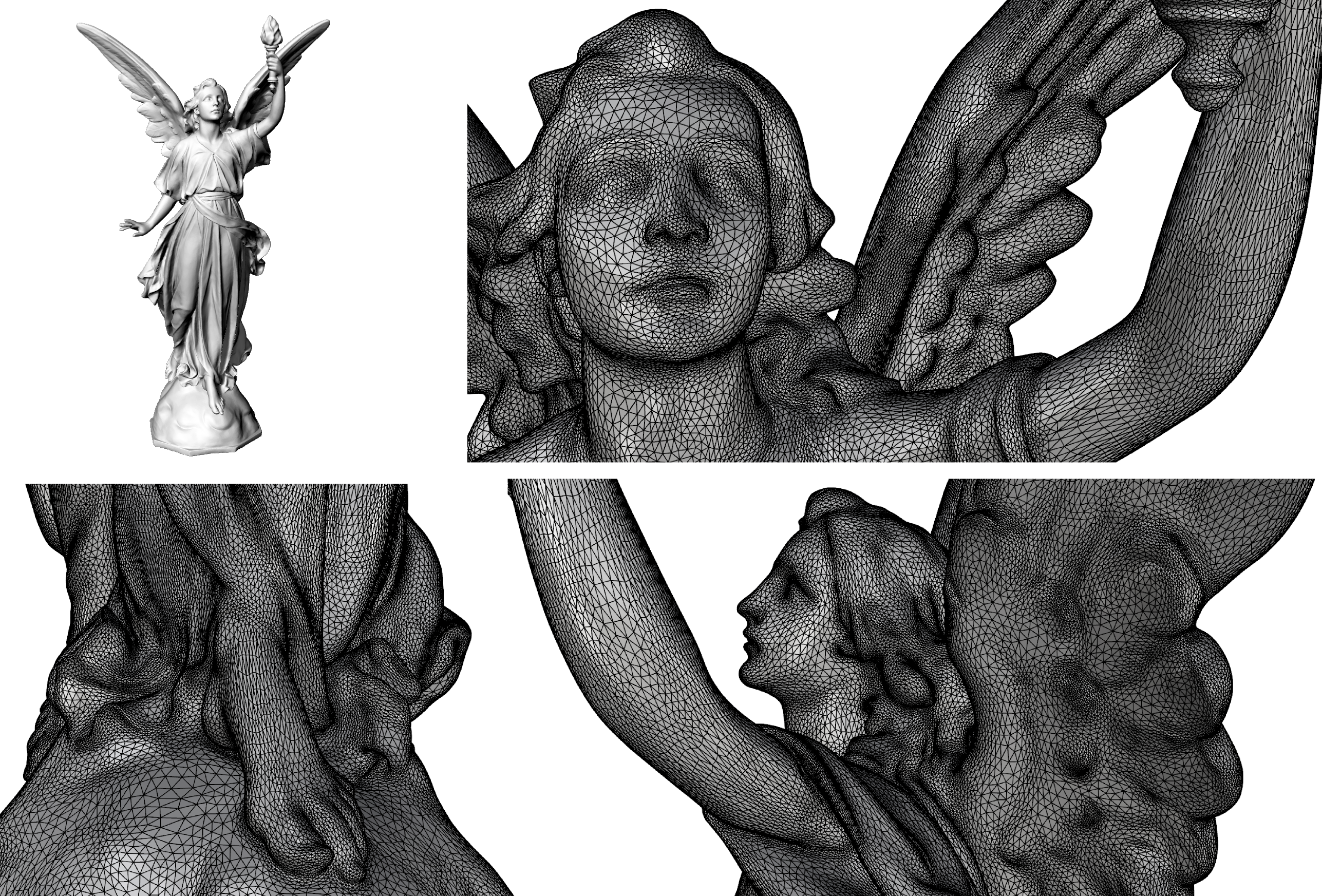
Anisotropic Simplicial Meshing Using Local Convex Functions
This paper introduces a novel method to generate high-quality simplicial meshes with specified anisotropy. The method works for highly-varying anisotropy and sharp boundary features, improving both the output quality and computational efficiency of anisotropic meshing.
Yang Liu, Microsoft Research Asia
Xiaoming Fu, University of Science and Technology of China
John Synder, Microsoft Research
Baining Guo, Microsoft Research Asia
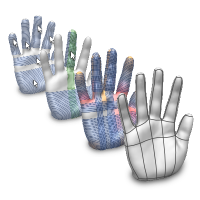
Interactive Design of Quad Layouts using Elastica Strips
We introduce Dual Strip Weaving, a novel concept for the interactive design of quad layouts, i.e. partitioning of free-form surfaces into quadrilateral patch networks. Based on so-called Elastica Strips our method is able to automatically propose suitable operations and to guide the user through the design process.
Marcel Campen, Rheinisch-Westfälische Technische Hochschule (RWTH) Aachen University
Leif Kobbelt, Rheinisch-Westfälische Technische Hochschule (RWTH) Aachen University
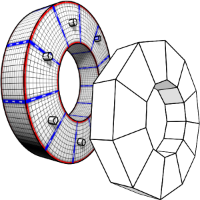
Level-of-Detail Quad Meshing
Existing parametrization based quad meshing methods are unfit to generate coarse quadrangulations for input meshes with small scale geometric or topological detail. We present a scale aware method that produces coarse quadrangulations unaffected from densely spaced features and noise in the input mesh.
Hans-Christian Ebke, Rheinisch-Westfälische Technische Hochschule (RWTH) Aachen University
Marcel Campen, Rheinisch-Westfälische Technische Hochschule (RWTH) Aachen University
David Bommes, INRIA Sophia Antipolis - Méditerranée
Leif Kobbelt, Rheinisch-Westfälische Technische Hochschule (RWTH) Aachen University
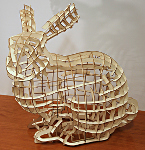
Field Aligned Mesh Joinery
We present a technique to generate abstract representations of a 3D object composed by flat pieces suitable for fabrication by laser cutting. The method is based on an advanced slit-joinery mechanism and on a sophisticate piece placement strategy that is able to match the main features of the object.
Paolo Cignoni, Consiglio Nazionale delle Ricerche, Institute of the National Research Council of Italy
Nico Pietroni, Visual Computing Lab, Consiglio Nazionale delle Ricerche, Institute of the National Research Council of Italy
Luigi Malomo, Computer Science Department, University of Pisa
Roberto Scopigno, Visual Computing Lab, Consiglio Nazionale delle Ricerche, Institute of the National Research Council of Italy

Strict Minimizers for Geometric Optimization
We introduce the idea of strict minimizers for geometric distortion measures used in shape interpolation, deformation, parametrization, and other applications involving geometric mappings. The strict minimizer is a minimal L_infty-norm solution that always prioritizes higher distortion reduction.
Zohar Levi, Technion – Israel Institute of Technology
Denis Zorin, New York University
 English
English 